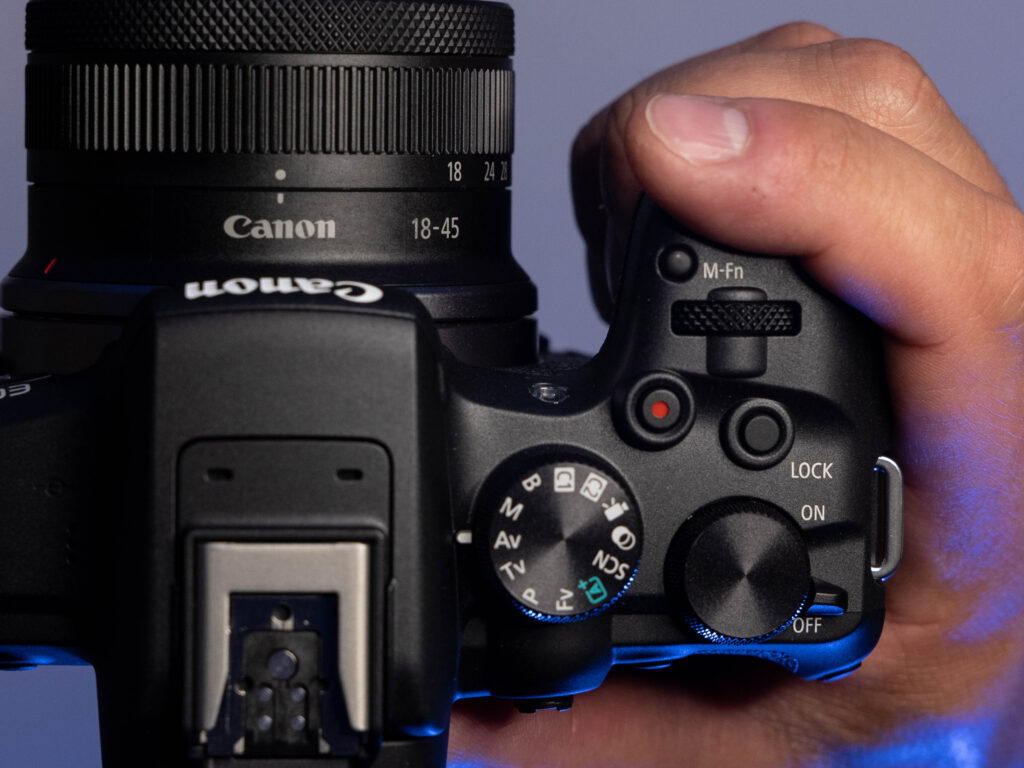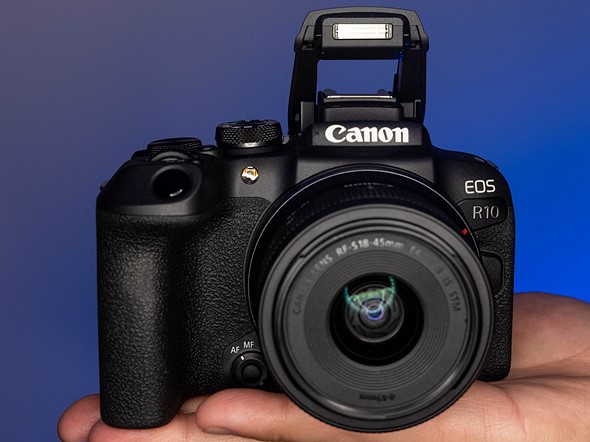The Canon EOS R10 is an example of an entry-level mirrorless camera that presents a problem for tech enthusiasts and content producers. On the one hand, they are a worthy replacement for entry-level DSLRs such as the EOS 550D or the Nikon D3500, and they are a wonderful entry point for photography and filmmaking in the modern day. Particularly the EOS R10 is a fantastic place to start. For many people today, it would be the ideal first camera.
On the other hand, it is competing against smartphone cameras in addition to industry heavyweights like the Sony A6400 and the Fuji X-T30 II. Particularly if producers are simply uploading online, smartphone cameras have improved dramatically over the past couple of years.
How does the EOS R10 compare to the greatest smartphone cameras currently available?
You won’t have as much leeway to colour grade your films because you don’t receive a flat C-Log profile. With the EOS R10, you may shoot 8-bit 4:2:0 SDR or 10-bit 4:2:2 HDR footage using any of the built-in image profiles. We do not believe that anyone using this camera initially intended to colour grade their videos, given that it is primarily designed for vloggers and amateur filmmakers. This implies that before you press the record button, you must have your exposure and white balance settings perfect. Once more, something very acceptable for a camera at this price range.
The absence of in-body stabilisation is the EOS R10’s biggest flaw, in our opinion. By using Canon’s IS-marked lenses, which include some image stabilisation, or, alternatively, by using electronic stabilisation, this can be improved to some amount. Do keep in mind that, in addition to the 1.6X APS-C crop, electronic IS adds a sizable crop.
The EOS R10 is skilled at retaining data in the shadows and has a respectable dynamic range. However, if you blow the highlights in the original shot badly, it did have a few very minor difficulty bringing them back. However, if you know what you’re doing, you have lots of room to edit and experiment with your photos.
Although the low-light performance is not outstanding, it is adequate. Beyond ISO 6400, there will be noticeable noise, particularly if you try to brighten the blacks in underexposed photos.

The EOS R10 can capture still images in mechanical shutter mode at an amazing rate of up to 15 frames per second. Even more astounding is the fact that it can reach 23 frames per second in electrical mode. Rolling shutter, on the other hand, should be avoided because it can distort a few images here and there, especially if your subject is moving quickly.
The EOS R10 is unparalleled as a video camera. You receive chopped video at 60 fps, which may not be as sharp as the 30 fps output but is unquestionably still useable, and exceptionally sharp downsampled 4K at 30 fps or less. It can record in 1080p slow motion at 120 frames per second. Once again becoming softer, the video has a cinematic appearance.
A single UHS-II SD memory card slot and a single battery opening are located at the bottom of the camera. The EOS R10 should have two card slots since data redundancy is crucial. We also wished that the battery door had a spring and some sort of weatherproofing. The absence of a battery door spring and the lack of weatherproofing, however, are acceptable shortcomings considering the EOS R10’s price.
Life Of The Battery

The LP-E17 battery powers the EOS R10. Despite being small, the battery has a powerful punch. Before you need to change the battery, you may easily have a few photo shoot sessions that last for hours or shoot 4K 30fps films for about an hour. In any event, if you intend to use the camera for your vlogging company, you might consider purchasing a second battery.
Do bear in mind that, as is the case with many mirrorless cameras that offer those options, utilising the wireless connectivity features frequently and taking pictures through the screen rather than the viewfinder causes the battery to discharge more quickly.
Verdict
Simply told, the EOS R10 is an excellent APS-C video camera and a superb stills camera. In many aspects, it is actually superior to the products that the majority of other camera manufacturers have to offer at this price point. At present time, no other major manufacturer’s autofocus system can compete with it.
Yes, there are some successes and failures. We firmly feel that the EOS R10 ought to have two SD card slots and that Canon ought to have included IBIS.
However, it faces competition from smartphones as well as other cameras at this price bracket. Any comparison you make will show that it is superior to smartphone cameras. Compared to a smartphone, the EOS R10 produces much superior films and pictures. Software tricks are ineffective when it comes to photographs and videos since physics still rules the day. Software trickery can never outweigh the benefits of employing high-quality glass and a larger sensor.
Instead of the simplicity of using a smartphone, the difficulty of using a camera is the issue. In order to educate today’s content creators and vloggers, Canon and the majority of other camera manufacturers will have their job cut out for them. I am aware of vloggers who have spent thousands of rupees on cameras and lenses yet film largely on iPhones for the sake of ease.
If I were to pursue vlogging or content production as a legitimate career, I would undoubtedly stake my money on the EOS R10 and a few quick prime lenses from Canon, regardless of what the majority of new-age content makers decide to do.


